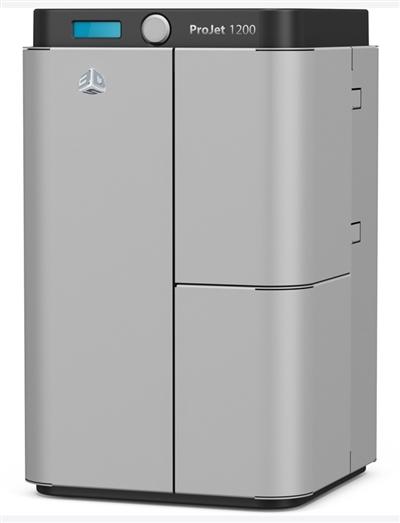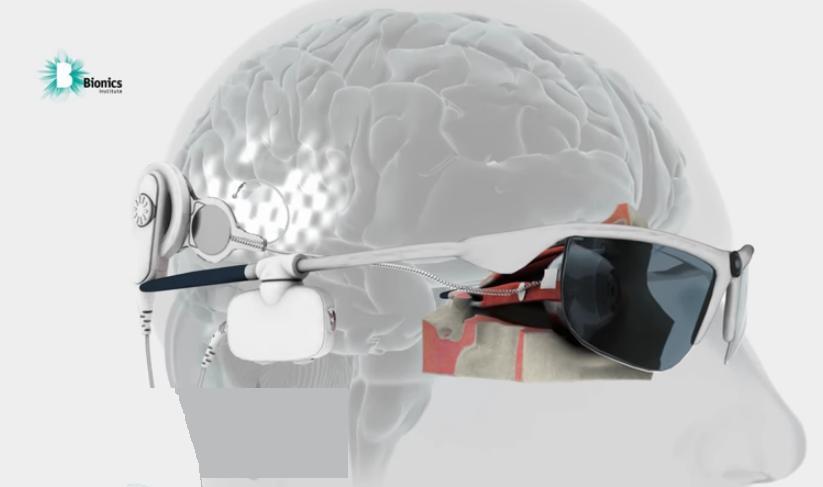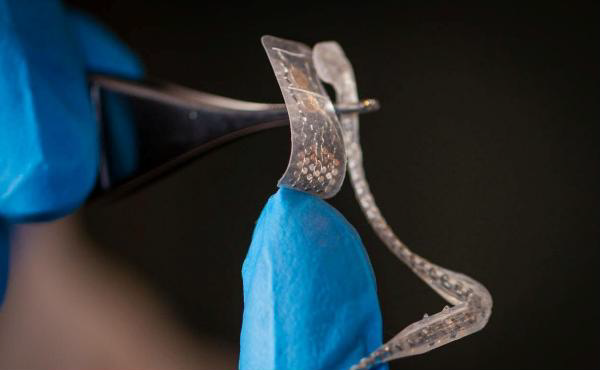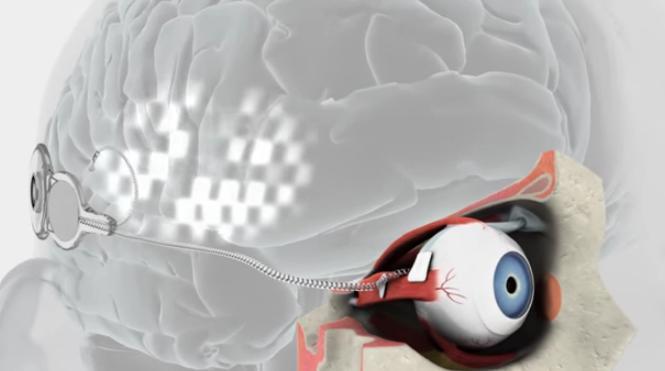 3D Printing is such an amazing technology. I can’t emphasize it enough. Each and every day I am surprised by the ways in which this technology is being used. As a journalist covering 3D printing news on a daily basis, there are days when I get goosebumps on my arms just writing a story, while other days I am presented with material that can be quite humorous. One thing is for sure though; I never have a boring day.
3D Printing is such an amazing technology. I can’t emphasize it enough. Each and every day I am surprised by the ways in which this technology is being used. As a journalist covering 3D printing news on a daily basis, there are days when I get goosebumps on my arms just writing a story, while other days I am presented with material that can be quite humorous. One thing is for sure though; I never have a boring day.
Today, in preparation for covering this particular story, I actually had tears come to my eyes; the very eyes, that thanks to my contact lenses, have nearly 20/20 vision, and the very eyes that many of us take for granted. Unfortunately, not everyone can see with clarity. There are those who have lost their eyesight almost completely due to macular degeneration, retinitis pigmentosa, or some other condition or events. These people only wish that they could one day see again.
Thanks to researchers at the Bionics Institute, 3D Systems’ ProJet 1200 3D printers and a company called evok3d, some of these people may one day get their vision back . Researchers have been working for several years on what they call a ‘bionic eye’, which aims to provide new vision to those suffering from retinitis pigmentosa and age-related macular degeneration. In order for a patient to see results from this device, which remains in its testing stages, they will need to still have some remaining retinal ganglion cells, a healthy optic nerve and visual cortex, and they must at one point in their lives have had the ability to see.
The bionic eye has already been tested on a select few individuals and it has been shown to work. It is able to provide enhanced vision to those experiencing both partial and total vision loss.
In order to generate the prototypes for these bionic eyes, as well as the molds used to create the silicon version, the Bionics Institute has been utilizing a ProJet 1200 3D printer, with help from evok3d, which specializes in 3D printing, scanning, and advanced additive manufacturing technology.
Associate Professor and Senior Research Fellow at the Bionics Institute Chris Williams has been tasked with using the ProJet 1200 printer in order to create verification models which are used to test for functionality, fit, and size. They also use the printers to create pre-production molds from the models which they use to cast silicon prototypes.
“We can now get a prototype out in 4 hours using the ProJet 1200,” explains Williams. “Before 3D printing it would take us weeks or months. We found it takes 20 iterations to reach an upgrade, in terms of going through iterations, the machine justified itself in the first week.”
These bionic eyes have been researched and worked on for 10 years now, and just recently, thanks to the precision and efficiency of 3D printing technology, the first clinical trials have been completed.
The bionic vision system includes a camera which transmits radio signals to a microchip in the back of the eye. These signals are then converted into electrical impulses, which are able to stimulate cells in the retina and connect to the optic nerve. They are then transferred to the vision processing areas of the brain, where they can be interpreted as an image which the patient can see. With the current prototypes, patients don’t exactly see the same way that we do. Instead they see blob-like shapes and lights, but the technology has proven to work in allowing blind individuals to walk around unassisted.
While the technology still has a ways to go before we see it hit mainstream use, there is an extraordinary amount of hope for those who have unfortunately lost their eyesight, thanks to the Bionic Institute, those individuals involved in the project, 3D printing, and evok3d.
“It was quite promising, their vision was optimized, obviously they want better vision and fully wireless power, but the eye surgeons were pleased with the process and that’s a platform for future trials,” Williams said.
What do you think about this incredible use of 3D printing to fabricate working prototypes for the creation of bionic eyes? Discuss in the 3D printed bionic eye forum thread on 3DPB.com. Check out the video below depicting where researches hope to be by the year 2020 with this technology.
Subscribe to Our Email Newsletter
Stay up-to-date on all the latest news from the 3D printing industry and receive information and offers from third party vendors.
You May Also Like
3D Printing Financials: Prodways’ Q1 2024 Revenue Drop and Accounting Overhaul
Prodways (EPA: PWG) has released its earnings report for the first quarter of 2024, announcing modest revenue. This result is lower than last year’s, reflecting the company’s ongoing adjustments to...
3D Printing Financials: Prodways Faces Headwinds, Cuts Jewelry Printers and Cristal Dental Lab for Turnaround
Prodways (EPA: PWG), a European leader in industrial 3D printing, encountered financial challenges in 2023, as revealed in its earnings report. The company saw a decline in revenue and profitability...
Printing Money Episode 12: Q3 2023 Earnings Reports with Troy Jensen, Cantor Fitzgerald
Episode 12 of Printing Money brings with it a slightly different approach, as Alex Kingsbury sits this one out while Danny runs the show. Equity research analyst Troy Jensen, now of Cantor...
3D Printing News Briefs, November 18, 2023: Depowdering, Jewelry Patterns, & More
We’re kicking off 3D Printing News Briefs with a little business today, as Horizon Microtechnologies invested in a micro AM platform from Boston Micro Fabrication, and Rivelin Robotics announced a...
































